Energy demand
More energy, less CO2
The world must find ways to meet this rising energy demand while reducing global greenhouse gas emissions to limit the effects of climate change. The historic Paris Agreement adopted by 195 countries in late 2015, and expected to be ratified over the coming year, established a goal to limit the global temperature rise this century to well below 2°C.
This reinforces the need to shift our existing energy system to one based on energy sources that are lower-carbon. It requires a huge undertaking – a global energy transition involves producing and consuming energy in a different way. We need to design our economies, communities and lives to thrive on these energy systems.
It will be necessary to achieve close to net-zero carbon dioxide (CO2) emissions as early as possible this century if we are to maintain a world below 2°C. In a net-zero emissions world, CO2 emissions would be safely absorbed by the earth’s natural infrastructure – such as forests and oceans – with any remaining emissions safely stored underground by carbon capture and storage (CCS). Shell’s New Lens Scenarios show that, while difficult, it could be possible for society to approach net-zero emissions by the end of this century. However, these scenarios assume an average global temperature increase of 2–3°C by 2100.
A huge part of the challenge is to cut the carbon from the existing fossil fuels that currently make up around 80% of the energy mix. Our New Lens Scenarios show that energy needs towards the end of this century will be predominantly met by renewable energy sources such as solar, wind and biomass, with fossil fuels around 25% of the energy mix.
Global energy consumption
While renewable energy sources are growing fast, there are technological challenges to achieving a completely renewable energy system. The world needs to shift four main areas of global energy consumption to low-carbon alternatives: electricity, transport, industry and domestic use (see diagram). Each of these sectors will transition at a different pace.
Today, 18% of total global energy use is provided by electricity. Around 40% of this electricity is still generated by coal, while just over 20% comes from renewable energy sources. By 2050, more than 40% of the world’s electricity could be powered by renewable energy sources, according to the International Energy Agency. At the same time, only around 3% of transport is powered by renewable energy sources. In 2040, this could reach 8%. Many forms of transport will, likely, still rely on oil-based products (blended with biofuels).
There are some industrial users, such as steel and aluminium producers, whose processes require temperatures that are currently difficult to achieve without hydrocarbons. Across other industries and in our homes, the existing infrastructure needs to change to shift from fossil fuels to electricity. The scale of the required investment is another reason why the energy transition will take time.
One possible solution to meet energy demand is to have a hybrid system of both renewable energy sources and lower-carbon oil and gas. This combination would give people access to a full suite of energy products until the technological challenges to achieving a lower-carbon energy system are solved.
Today’s energy needs
The world today currently consumes most of its energy from coal, oil and gas sources, with around a fifth of total energy supply used to generate electricity. Energy sources differ across the sectors of industry, transport and domestic use which all need to transition to low-carbon energy options.
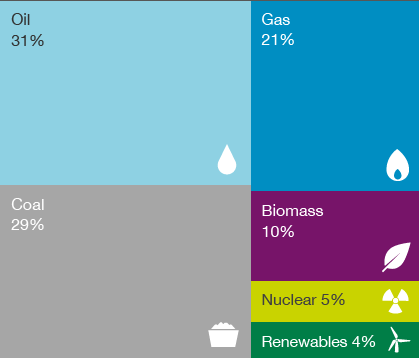
Electricity generation
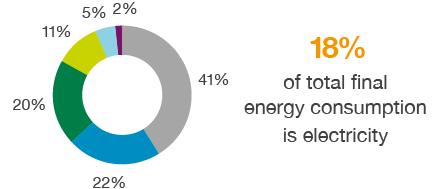

30%
of domestic and commercial demand is still met by traditional biomass energy
Domestic & Commercial
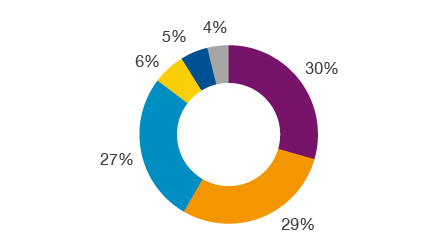

96%
of transport is fuelled by liquid fuels
Transport
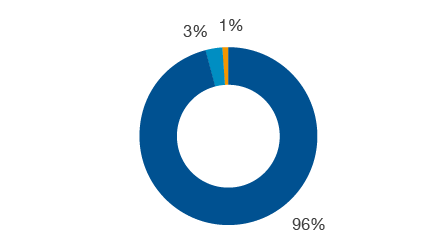

27%
of industry runs on gas
Industry
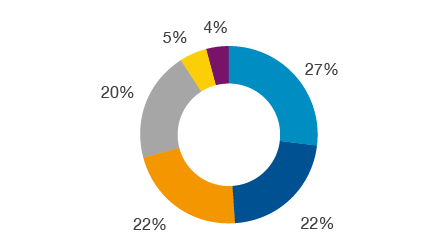
- Oil
- Coal
- Gas
- Biomass
- Nuclear
- Renewables (including hydro)
- Electricity
- Heat
- Liquid fuels (including biofuels)
Source: International Energy Agency, Key world energy statistics 2015 and World energy outlook 2015.
